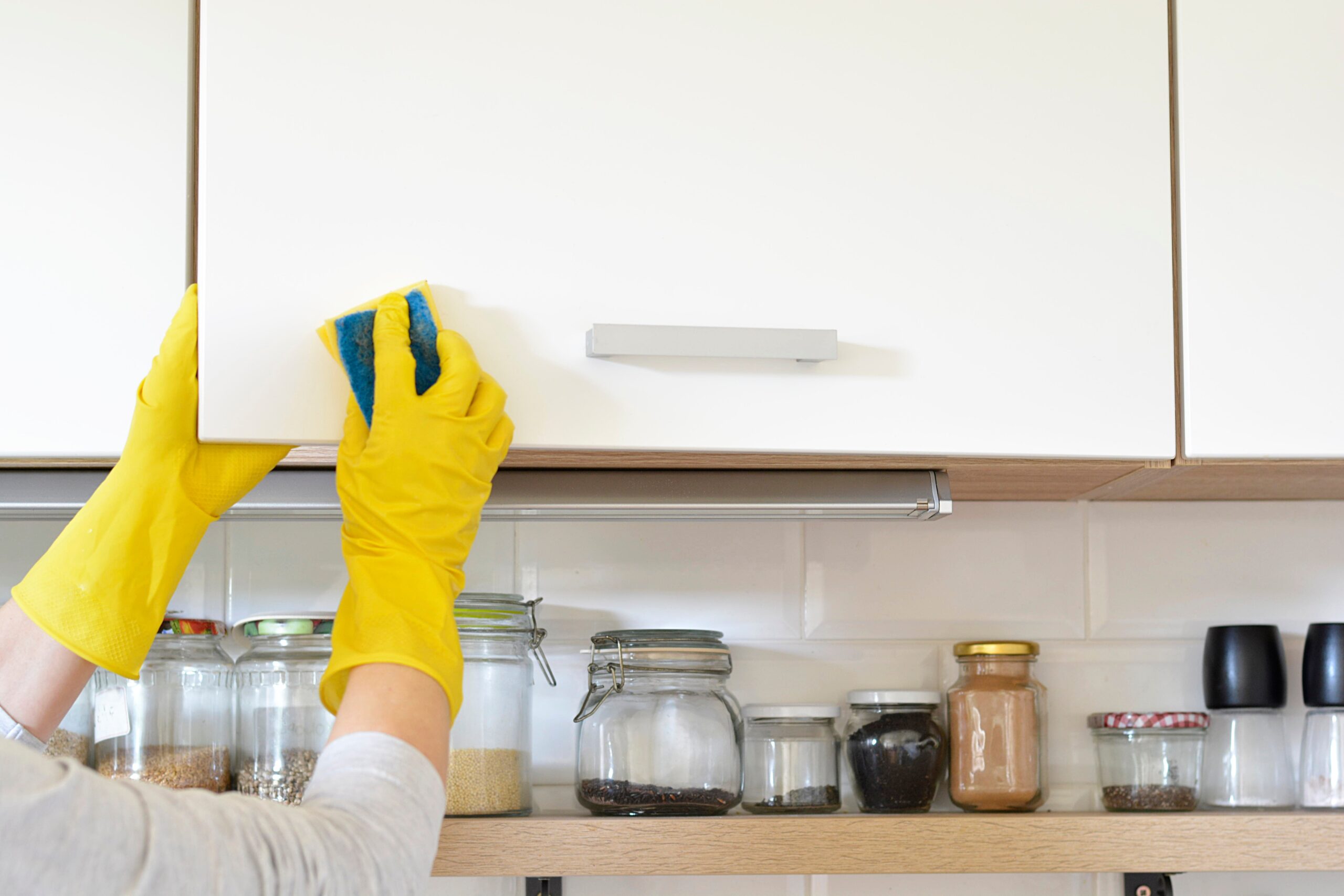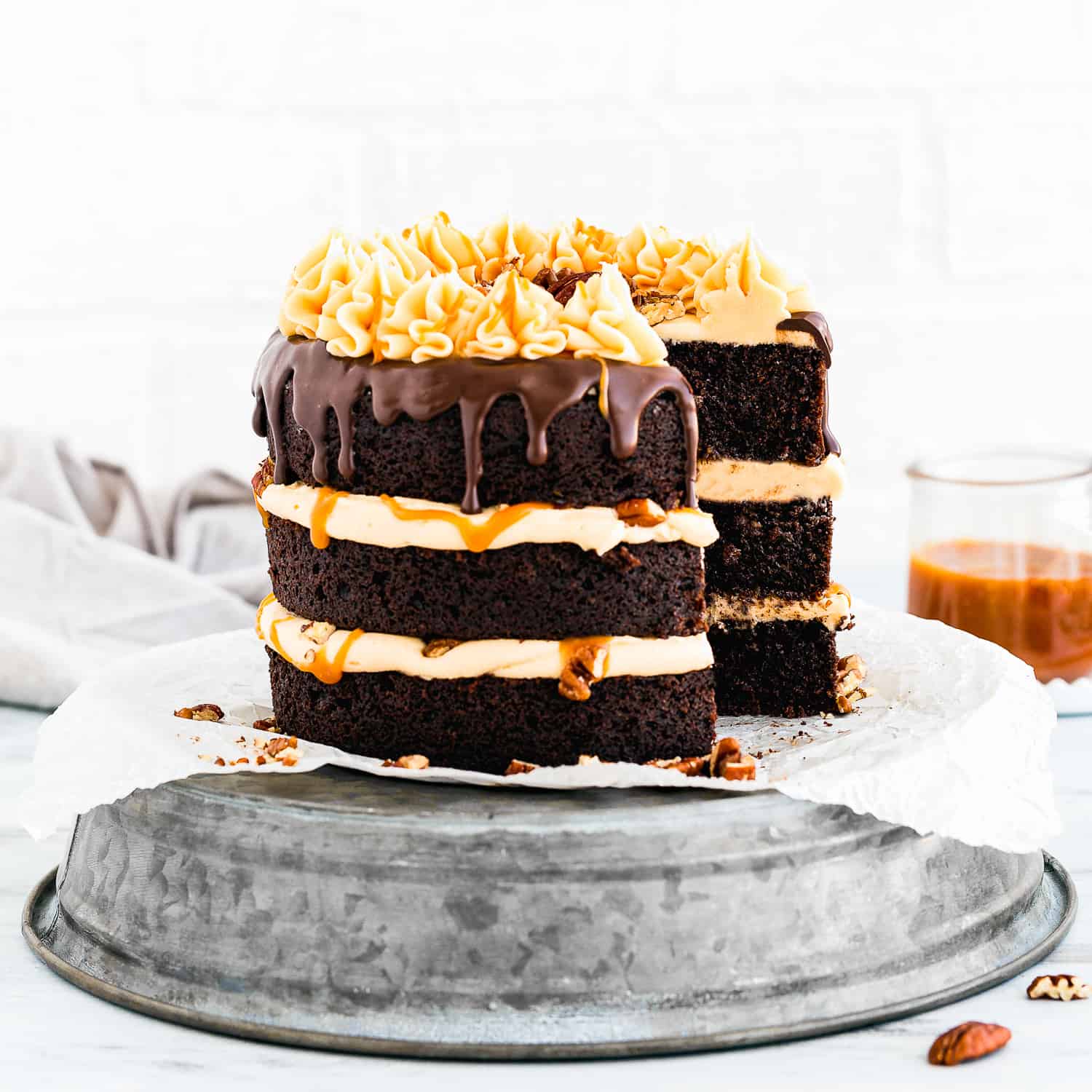8 Tips to Keeping an Allergy Friendly Kitchen
This post may contain affiliate links. Read our disclosure policy.
The content provided on FoodAllergiesLiving.com is for educational purposes only. The information supplied on this website is not intended to diagnose, treat, cure, or prevent any disease, nor is it intended to replace the advice of a physician.
If you, or a loved one, have any food allergies, one of the most important ways to keep everyone safe is by keeping an allergy-friendly kitchen. You may feel a little intimidated by looking at the long list of foods you now have to avoid, but it’s ok, we’ve all been there. By taking the necessary steps and organizing your kitchen correctly, you can easily be a superstar when it comes to keeping allergens out of your kitchen.

My Best Tips to Keep An Allergy-Friendly Kitchen
There is a large debate in the food allergy community as to whether or not allergens should even be in the house when there’s a family member with an allergy. Some say that they should not ever be allowed in, while some want to find a way to allow other (non-allergic) family members to enjoy these “off-limits” foods.
No matter what camp you’re in, it’s always important to understand how to manage an allergy-friendly kitchen. That’s why, as a mother to a child with severe food allergies, I’m here to share my top 8 tips on how to keep the heart of the home a safe space for everyone.
1. Color Coding
Color coding is a great visual approach to managing an allergy-friendly kitchen. This is an especially good system for young children who may not be able to read yet but can understand the meaning of different colors.
Personally, I like the system of using Green as “OK” and Red as “NO” because it’s easy for everyone to understand. You can put safe food in green containers or use green stickers if you prefer, and store any unsafe food in red containers or use a red label.
You can use this color-coding system in your pantry, fridge, and freezer, just be sure to stay consistent and make sure everyone living in your house understands the importance of consistency.
Here are my favorite red containers to use, and these are my favorite green ones.
2. Label Everything
When I say label everything, I mean: Label EVERYTHING. When it comes to managing an allergy-friendly kitchen, you can never be too safe.
I previously mentioned labeling “safe” or “unsafe” foods by color, but for older kids or adults, labels are another good method. You can use a label maker, tape, and a marker, or even use certain stickers, but just make sure your system is consistent, so everyone is on the same page.
If storing food next to each other in the fridge or freezer, label the safe food with the allergic individual’s name in order to prevent a mix-up. You can also put a safe label on a large basket of snacks and pre-packaged foods in the pantry, which will make it easy for older kids and/or babysitters to feel confident in their food choices.
3. Keep An Allergy Chart On The Fridge
Keeping an allergy chart on the fridge is an especially important management strategy if you have a nanny, babysitter, or any extended family member watching your kids. They may not understand the full spectrum of your child’s food allergies, so a chart that explains everything in detail can be a lifesaver.
You can list the child’s (or children’s) name, allergies, emergency phone numbers, and plan of action in case of an emergency on it. I also suggest placing a copy into your child’s lunchbox (if they attend school) and letting your child know so they can point a teacher in the right direction if needed.
4. Cook With Separate Kitchen Tools
Cooking with separate kitchen tools is a fantastic way to help avoid cross-contamination or cross-contact. Even though you may wash your tools and utensils thoroughly, having two sets of these items eliminates the risk almost entirely.
An air fryer is an inexpensive tool that can do just about everything and still keep your family member with an allergy safe. You can toast in it, cook breakfast foods, roast chicken or steak, and also cook veggies.
Another recommendation I have is to cook with stainless steel, glass, or rubber tools which, unlike wood, are less likely to harbor any allergen proteins.
5. Have A Routine
When I say, “Have a routine,” you may be wondering what I mean. Well, this technique is more for grocery shopping and unloading.
When you’re at the grocery store, be sure to check the product labels for any allergens, and then when you get home, check again. Once a product has been double-checked, immediately put it away in your safe location so that it doesn’t become mixed up with a box that may look similar.
By establishing a routine like this, you and your entire family can reduce the risk of any accidental allergic reactions.
6. Create A Safety Chart
A safety chart is another fantastic visual technique to use with little kids. You can have a chart of steps to take when preparing food, a chart that has pictures of safe foods, or a checklist to follow in case of an allergy attack.
Not only does a safety chart make it simple for small children, but because of its simplicity, it can be a lifesaver for anyone babysitting your child. You place magnetic boards in the fridge and customize it to your needs.
7. Clean Well and Often
You always want to clean any surfaces that either had food on them or may have come in contact with food well after eating. You can use soap and warm water with a paper towel or a disinfectant spray.
It’s also important to purchase cleaning products that are unscented or say “Free and Clear.” The fragrances may be an irritant for some people with allergies.
8. Avoid Cross Contact
Avoiding cross-contact is one of the most effective ways to reduce the possibility of an allergy attack in your own kitchen. If you have enough counter space, maybe think about dedicating one side to holding any “safe” foods and the other side to keeping the “unsafe” foods.
You can even make a divider out of tape that way, the person with allergies can always be sure that the food that’s on their side is safe for them to eat.
Another way to avoid cross-contact goes back to having 2 sets of kitchen utensils, as well as separate dishes for the person with allergies, and making sure everyone thoroughly washes their hands after touching any food.
There you go, I hope I helped you feel a little more at ease about stepping into these uncharted food allergy waters. While it does take some work (and time) to get everything running smoothly, by implementing some of these tips, you’ll be a pro in no time. It’s hard to always keep an allergy-friendly kitchen, but with patience and persistence, I know you’ll be able to do it.







